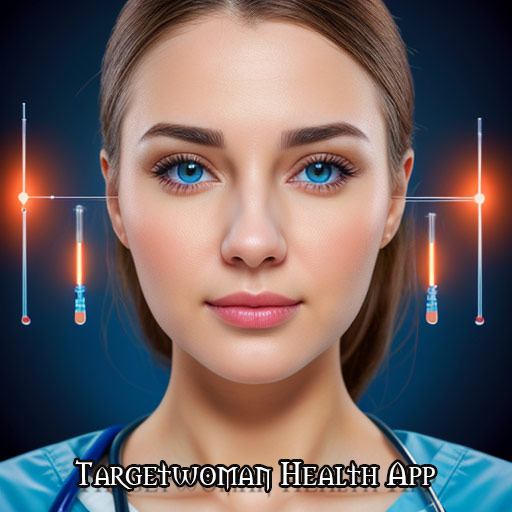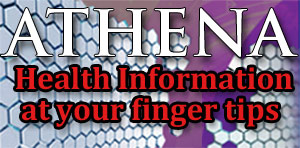Cold Burn
Cold burn or Frostbite occurs when the skin is in touch with an extremely cold body. Extreme cold can cause damage to the skin and underlying tissues. For example, if there is a prolonged contact of the skin with moderately cold body like snow or very cold bodies like dry ice, liquid helium or liquid nitrogen for a brief period, cold burns or ice burns will occur. Here heat is transferred from the skin and organs to the cold body that is in contact. In other kinds of burns, the body that causes the burn is hotter and heat is transferred to the skin or the organ.
Symptoms of frostbite include pins and needles sensation and then numbness in the area. Initially there may be throbbing or aching. The affected part seems to become insensate. In severe frostbite, when the tissue starts to freeze, the skin at that area may appear white and numb. In areas affected by frost burn, abnormal accumulation of blood takes place. In addition to accumulation of body fluids, a blood clot may form thereby preventing blood circulation around the area resulting in tissue decay. Mottled and violaceous tissue is noticed. Normal functioning of the body is disturbed because of cooling of the internal organs, which will lead to a critical condition called hypothermia. Cooling of the brain or heart is very dangerous.
If hypothermia is noticed, treating it should be the priority. Blisters are noticed when there is very severe frostbite. Blisters are the result of expansion of the surrounding layers of the skin and the release of serous fluid or plasma. |
The accumulated plasma in the blister is intended to prevent further damage and also to help in the healing process. To avoid infection from the blister, it is important that it is not punctured as it would expose the raw skin for further infection. The serous fluid will be reabsorbed by the skin usually after 24 hours if there is no infection.
Severe frostbite may also damage tendons, muscles, nerves and bones. Gangrene is inevitable in the case of very severe frostbite. Frostbite may affect any part of the body.
The most vulnerable parts are hands, feet, nose and ears. Recovery may be significant when the skin and underlying body tissues are injured and it may be permanent if there is injury to the blood vessels. If gangrene follows, the affected part may have to be amputated. When warming up of the affected part begins, the patient will experience intense pain. There will be tingling or burning sensation in the affected area also.
People taking beta-blockers that decrease blood flow to the skin and those who suffer Peripheral Vascular Disease are at risk when exposed to cold for a prolonged period. Any person who is exposed to extreme cold for a long period is susceptible to frostbite. Diabetes, peripheral neuropathy or Raynaud's phenomenon are some conditions that may have increased risk of cold burns. Smoking and windy weather when the rate of heat loss from the skin is more will hinder the healing process. Cold burns at the work place are common. People who work in factories where they may come in contact with metal surfaces that are at extremely cold temperatures are prone to cold burns. When the skin is moist, they may receive almost instantaneous cold burns.
Prevention of freeze burns
Extreme cold, wet clothes, high winds and poor circulation are some of the factors that can contribute to freeze burns. Tight boots or clothing and conditions like cramped positions, some medications, smoking or alcohol can cause frostbite. Wearing appropriate clothing in winter when the temperature goes below normal and will help. Winter clothes like mittens, layered clothing that is wind-proof and water resistant gives good protection.
First Aid for cold burns
It is essential that the ice burn treatment is correctly done as soon as possible.
- If you anticipate prolonged exposure to cold, avoid alcohol or smoking and take sufficient food and rest. Increase physical activity that maintains body temperature and find shelter in a snowstorm as early as possible.
- Victims should be moved to a warmer place to give shelter from the cold. Constricting jewelry and wet clothes should be removed. If there are symptoms of hypothermia, treat it immediately.
- Wrap the affected areas using sterile dressings. Dressings should be done after separating affected fingers and toes.
- In case immediate care is unavailable, you can go for re-warming first aid. This can be done by immersing the affected parts in warm water. Otherwise repeated application of warm clothes to injured ears, cheeks or nose for 20 to 30 minutes helps. Water temperature should be kept between 104 to 108 degrees F. To aid the warming process, the water should be kept circulating. During the warming process, swelling, color changes and severe burning pain may be noticed. The wound will heal when there is a slow heat transfer from water to the affected part.
- The frost bitten areas should be dressed with dry, sterile dressings. Remembering to keep the fingers or toes separated is important.
- Thawed areas should not be moved as far as possible.
- In case of extensive freeze burns, giving warm drinks to the victim helps in replacing lost fluids.
- Wet clothing must be removed and replaced with warm clothing.
- Until you reach a warm and safe location, do not go for re-warming process. There is the danger of severe damage because of re-freezing of thawed extremities.
Frostnip is the least severe form of cold injury that occurs after the distal extremities are exposed to prolonged period of cold but non-freezing temperatures. Vasoconstriction is felt. Frostnip is a precursor to frostbite and does not involve the same levels of tissue destruction. The affected area appears pale.
Immersion foot is a condition where there is severe tissue injury due to prolonged and persistent exposure to wet conditions, cold or hot. It results in tissue edema and inflammation. This is often seen in homeless persons who are exposed to the elements. The extremities appear swollen and erythematous (skin turning red often manifested in patches). Bad odor is often noticed as also tissue sloughing.
Cold Sores
Cold sores or fever blisters refer to facial lesions found on the area around the mouth. Cold sores usually appear on your lips. Occasionally, cold sores can be noticed on the nostrils, chin or fingers. Cold sores are painful and the swelling and redness last nearly for about 10 days. Fever sores are a reaction to the latent herpes simplex virus that is already present in the body. A person suffering from fever blisters is likely to suffer fever and headache and pain while swallowing. The cold sores may also affect the person's ability to eat. These sores later develop a yellow crust that is sloughed off to reveal new skin. Cold sores are contagious and this virus can be passed on from sharing towels or eating utensils. Prolonged exposure to sunlight may aggravate the condition of fever blisters or even bring on a recurrence. Cold sores are usually treated with anti-viral creams and cold compress. Aspirin or Ibuprufen may be taken to reduce the pain. When high fever or eye irritation is noticed, it is necessary to contact a doctor.
Upper Respiratory Infections
Upper respiratory tract infections (URTI) are probably one of the most common infections that affect children and adults alike. While the common cold - Nasopharyngitis is usually self-limiting, other respiratory infections such as pharyngitis, sinusitis, epiglottitis and laryngotracheitis (inflammation of the trachea and larynx) must be promptly treated. The common cold is a mild and self-limiting condition that affects children often in their early years. Thereafter the incidence decreases.
Common Cold : Most upper respiratory infections (URI) are viral. There are nearly 200 types of virus that cause the common cold. You are more likely to contract an upper respiratory infection when you are tired and physically or emotionally fatigued. Working and living in crowds and lack of balanced nutrition make you more susceptible to URIs. The common cold is very contagious. It is not surprising to note an entire class being affected by it as soon as a child gets affected by a new strain of virus. Spread of virus occurs while sneezing or touching the eyes or mouth after you have touched something contaminated by the virus. A person suffering from a cold - Nasopharyngitis, is most contagious during the first 3 days. Typical symptoms of URI are runny nose, sore throat and water eyes. The ears may be congested and the person may run mild fever. The first 2 days of a cold are marked by repeated sneezing and watery nasal discharge. This secretion becomes thicker in a couple of days. You might experience postnasal drip, low-grade fever, headache, burning eyes and muscle aches depending on the kind of virus you have picked up.
Most of the time, common colds are treated with over-the-counter medications. Resting well and drinking plenty of fluids can help you feel better. Hot chicken soup can do wonders to relieve stuffy nose and other symptoms. Gargling with warm salt water works well for a sore throat. Mild antihistamines can be used for runny nose. Expectorants can help in drainage of mucus. Acetaminophen or mild pain relievers can be used in case of sore throat and headache. Vitamin C supplements can also help. Inhaling steam can temporarily relieve symptoms of congestion.
Tags: #Cold Burn #Cold Sores #Upper Respiratory Infections
At TargetWoman, every page you read is crafted by a team of highly qualified experts — not generated by artificial intelligence. We believe in thoughtful, human-written content backed by research, insight, and empathy. Our use of AI is limited to semantic understanding, helping us better connect ideas, organize knowledge, and enhance user experience — never to replace the human voice that defines our work. Our Natural Language Navigational engine knows that words form only the outer superficial layer. The real meaning of the words are deduced from the collection of words, their proximity to each other and the context.
Diseases, Symptoms, Tests and Treatment arranged in alphabetical order:

A B C D E F G H I J K L M N O P Q R S T U V W X Y Z
Bibliography / Reference
Collection of Pages - Last revised Date: October 17, 2025



